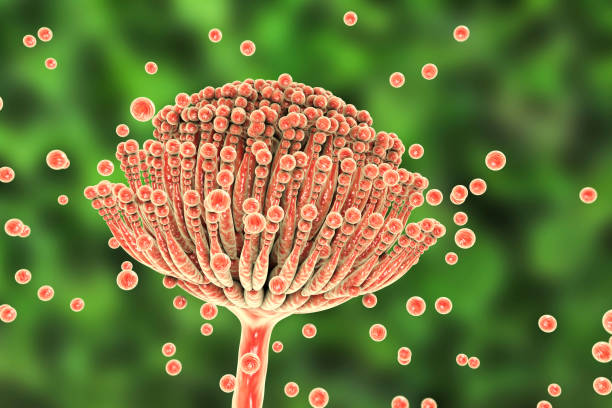
Mycotoxins in Pet Food
Mycotoxins are toxins produced by molds, primarily by the fungi Aspergillus flavus and Aspergillus parasiticus.1 These molds grow on agricultural crops like corn, peanuts, and other grains and produce potent hepatotoxins (toxins that harm the liver).2 Pets can be exposed to aflatoxins by eating moldy corn, grains, or aflatoxin-contaminated foods. Factors such as grain age, moisture, and storage conditions can play a large role in aflatoxin levels. Unfortunately, you do not have to see mold growing on food for aflatoxin to be present. At high levels, it can produce aflatoxicosis that can cause liver damage and death in pets, if not addressed quickly by a veterinarian.3
Signs of aflatoxin exposure can include sluggishness, loss of appetite, vomiting, diarrhea, and jaundice (yellowing of the eyes, gums, and skin).4 Many pets will not object to consuming the contaminated food and may have minimal signs of illness until acute onset occurs. Treatment aims include prevention of further absorption through identification and removal of the contaminated product and supportive care should also be provided.5 If you suspect your pet has aflatoxin poisoning, you should call your veterinarian immediately and seek emergency care. A veterinarian will evaluate your pet and ask what a pet may have been exposed to and will treat the signs of liver dysfunction.
If you suspect your pet has been exposed to aflatoxin, keep the suspected contaminated product(s) and take a picture of the bag that includes both the lot number and expiration date.6 This potentially contaminated product can be tested if warranted. Contact the food manufacture so that an investigation into the food can be started.
There are some actions that can be taken at home to help prevent mold growth in finished pet food. It is not advisable to freeze food and then thaw it because of the high moisture condensation that develops, which can enhance mold growth. This also includes keeping food stored in a cool, dry, clean storage container that discourages the environment from mold growth.
To prevent aflatoxins in pet foods, manufacturers are strongly encouraged to test all ingredients that can potentially contain aflatoxins for these dangerous substances. They can screen all incoming ingredients and ingredient suppliers to ensure correct harvest conditions, storage, and preservation methods were followed to reduce the risk of contamination.7 Manufacturers can also test all of their final products and routinely keep batch samples in storage for testing, should an issue arise. Due to constant changes in crop types, environmental growing, and storage conditions, and more, the more frequent the testing, the better.
Resources
1. “Aflatoxins - Cancer-Causing Substances - NCI.” National Cancer Institute, https://www.cancer.gov/about-cancer/causes-prevention/risk/substances/aflatoxins. Accessed 9 Jan. 2023.
2. “Mycotoxicoses | Iowa State University.” Welcome | Iowa State University, https://vetmed.iastate.edu/vdpam/FSVD/swine/index-diseases/mycotoxicoses. Accessed 9 Jan. 2023.
3. “Aflatoxin Poisoning in Pets | FDA.” S. Food and Drug Administration, FDA, https://www.fda.gov/animal-veterinary/animal-health-literacy/aflatoxin-poisoning-pets. Accessed 9 Jan. 2023.
4. “MDARD - Aflatoxin Poisoning in Pets: What You Need to Know.” SOM - State of Michigan, https://www.michigan.gov/mdard/plant-pest/feed/feedrecalls/aflatoxin-poisoning-in-pets-what-you-need-to-know. Accessed 9 Jan. 2023.
5. Hooser SB, Talcott PA. Aflatoxin, Chapter 62 Mycotoxins In: Small Animal Toxicology 2nd Peterson ME, Talcott PA Eds. Saunders Elsvier, St. Louis, 2006.
6. Stenske, Katherine A. “Aflatoxicosis in Dogs and Dealing with Suspected Contaminated Commercial Foods in: Journal of the American Veterinary Medical Association Volume 228 Issue 11.” AVMA, 1 June 2006, https://avmajournals.avma.org/view/journals/javma/228/11/javma.228.11.1686.xml.
7. “Mycotoxicoses | Iowa State University.” Welcome | Iowa State University, https://vetmed.iastate.edu/vdpam/FSVD/swine/index-diseases/mycotoxicoses. Accessed 9 Jan. 2023.
Follow us on LinkedIn for the latest updates on all things happening here at BSM Partners.
About the Author
Dr. Katy Miller works as the Director of Veterinary Services at BSM Partners. She earned her veterinary degree at Ross University and completed her clinical year at Louisiana State University. She previously served for 11 years as the Director of Dog and Cat Health and Nutrition for Mud Bay where she earned multiple certifications and specialized in pet food nutrition, prior to which she practiced general and emergency medicine for seven years. She is also a competitive three-day eventer, licensed falconer, and claims only two (Golden and Mini Doxie) of their nine dogs.
This content is the property of BSM Partners. Reproduction or retransmission or repurposing of any portion of this content is expressly prohibited without the approval of BSM Partners and is governed by the terms and conditions explained here.